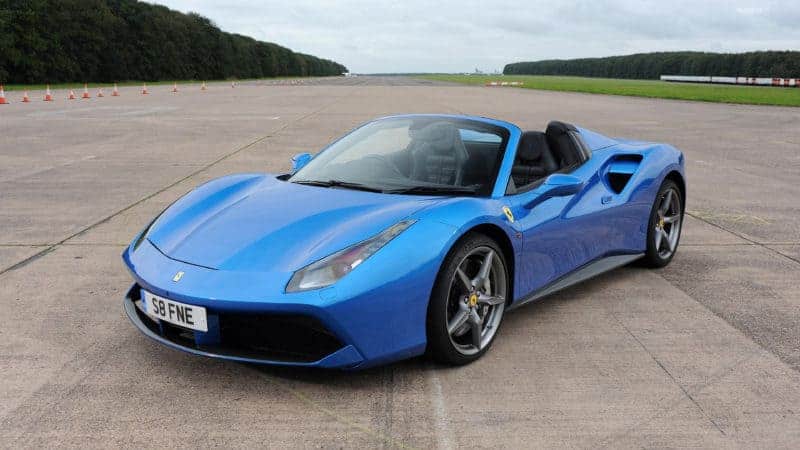The famous Italian luxury sports car manufacturer is falling behind in the sales race due to a simple fact that all of its competitors are now essentially fielding an SUV in their lineups. With the Ferrari SUV/crossover yet to show its face, the Maranello company still records more than admirable results. They’ve shipped a total of 8,398 vehicles worldwide during 2017 which is an increase of close to 5 percent compared to 2016. Moreover, they’ve delivered 9,251 cars during 2018 which is another 10 percent increase compared to previous year.
Ferrari’s revenues have also gone up by no less than 10 percent and amounted to more than 3.4 million euros, or 3.85 million U.S. dollars in 2017, according to the average yearly exchange rate for that year. However, their 2018 revenue remains mostly intact, only showcasing a minor increase. With the additional models scheduled to bolster the 2020 Ferrari lineup, the Italians can count on that trend’s imminent continuation.
Speaking of Ferrari on the U.S. market, the Italians have managed to sell 2,518 units here during 2017. An increase of more than 7.5 percent compared to 2016 means that U.S. sales are growing more rapidly than overall global sales. With no fewer than 15 new models scheduled to be released by the end of 2020, Ferrari’s sales are destined to continue growing. Especially considering one of the new models will be the aforementioned Ferrari SUV.
Furthermore, 60 percent of the entire Ferrari fleet is expected to sport at least some sort of electric help – if not the all-electric powertrain – by 2022. This, however, is a story for another time as our focus ends with MY 2020 this time.
So, without further ado, here’s what to pay attention to when it comes to Ferrari in 2020 while also remembering some of the best and worst Ferrari models ever produced.
What’s Hot in the New 2020 Ferrari Lineup
08. 2020 SF90 Stradale
The upcoming 2020 Ferrari SF90 Stradale is the first-ever Ferrari plug-in hybrid and the first in line of many future models with a similar powertrain combination. It shares the name with the Formula 1 racing car designed to compete in the 2019 Formula One World Championship season. That, however, is the only thing these two opposites will share.
The SF90 – with stradale meaning road in Italian – as its name suggests, is intended for mass production (if any Ferrari can be considered a mass-production vehicle, that is). Official pricing and production numbers still haven’t been disclosed but being a mass production model without a cap, the Stradale should be available in abundant quantities at somewhere north of $500,000.
The first of many hybrid Ferrari supercars will be capable of providing up to 15 miles of range on electricity alone, but that still doesn’t mean it’ll be a good choice for short-term carpooling.
The first electric powertrain from Maranello consists of a conventional 4.0L twin-turbo V8 mill, a 7.9-kWh lithium-ion battery pack, and three electric motors (one tied to the transmission and two mounted upon each of front wheels). This setup is good enough for 986 hp and 590 lb-ft of torque with V8 engine alone providing a whopping 769 ponies, effectively making it the most powerful Ferrari V8 to date.
All that power is being routed to all four wheels via an 8-speed dual-clutch gearbox. Moreover, it enables the Ferrari SF90 Stradale to hit the 60 mph mark in mere 2.5 seconds on its way to the top speed of 211 mph.
Thanks to all of the aforementioned figures, the SF90 Stradale will become the most powerful Ferrari car ever produced once it finally hits the roads in 2020.
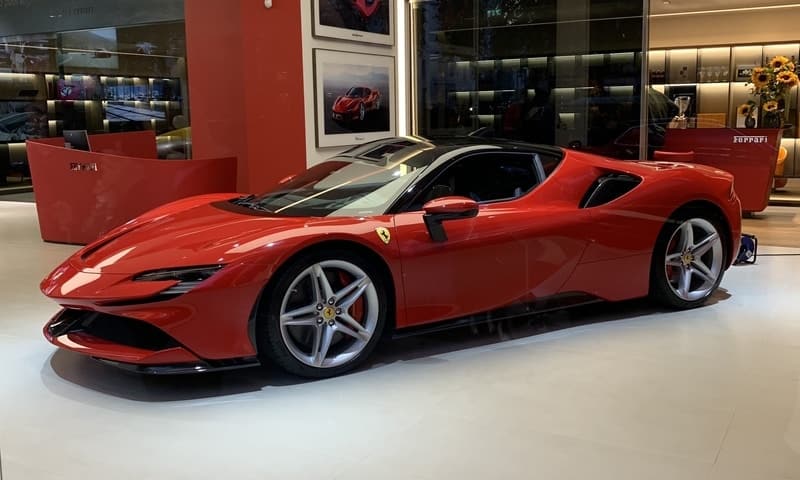
07. 2020 F8 Tributo
As replacement for the outgoing 488 GTB, the Ferrari F8 Tributo is expected to be one of the more popular Ferrari models once it arrives to global markets during MY 2020. Similar in many ways to its predecessor, the Tributo is expected to build up on the 488’s reputation in every way conceivable.
The newest of V8 mid-engined Ferraris also draws inspiration from some of the most iconic Maranello nameplates of old, such as the beloved F40. The Tributo gets rear window louvers from it. Yet, the end-product is still closest to its predecessor than any other Ferrari supercar.
Compared to the 488 GTB, the new model is 88 pounds lighter thanks to, in no small part, a new carbon-fiber rear spoiler, lighter polycarbonate front and rear bumpers, and the already mentioned rear window which is made out of Lexan instead of glass. However, the biggest weight savings have been achieved in the powertrain department.
Speaking of which, the forthcoming 2020 Ferrari F8 Tributo draws motivation from the 488 Pista’s 710 horsepower and 568 lb-ft of torque 3.9L twin-turbo V8. Paired with a 7-speed dual-clutch transmission (what else!), the Tributo is capable of galloping to 60 mph in just 2.9 seconds, achieving the top speed of 211 mph, and doing a quarter-mile in north of 10 seconds.
The powertrain-related weight savings mentioned above were achieved by using titanium connecting rods, a lightweight optimized flywheel, and Inconel-sourced super-alloy-built exhaust headers.
Needless to say, the new car also delivers in terms of latest technology as it incorporates the 488 Pista’s “Ferrari Dynamic Enhancer.” However, the Tributo sports a recalibrated FDE unit in order to provide a broader range of driving abilities considering how the donor car was actually track-focused.

06. 2020 Ferrari Purosangue SUV
Italian for “Thoroughbred,” the forthcoming Purosangue aims to fill the vacant SUV spot in the Ferrari lineup that’s becoming increasingly more of a gaping hole with every passing minute the Lamborghini Urus remains unchallenged. The recent passing of the FCA and Ferrari CEO Sergio Marchionne will have an impact on the performance luxury SUV’s arrival date, however.
Marchionne’s successor Louis Carey Camilleri has actually pushed the Purosangue’s production beyond MY 2020 together with lowering the projected profit threshold set by his predecessor. Camilleri also added that this delay will only help Ferrari achieve perfection with their very first SUV which promises to be a unique vehicle in its segment in numerous ways.
Hopefully, the Maranello company’s engineers and designers will be able to complete this momentous task by the end of 2020. If not, we can expect to see the Purosangue sometime during 2021, possibly even as a 2022 model.
The Ferrari Purosangue should be built together with the next-gen GTC4Lusso and will possibly borrow a cue or two from the luxury shooting brake. Of course, the SUV, or as Ferrari brass like to call it, the FUV (Ferrari Utility Vehicle) will sit upon a higher aluminum-rich platform with all-wheel drive offered as standard.
Although nothing official has been confirmed yet, Camilleri promises it’ll dethrone the Lambo Urus from the fastest SUV spot. This means it’ll have to offer more than 641 horsepower the arch rival’s up-and-coming best-seller does, and accelerate to 60 mph from a standing start in less than 3.6 seconds. This will likely be achieved by using an electrified powertrain as the forthcoming Ferrari Purosangue’s front mid-engined platform is more than capable of accommodating such a setup.
Prices are another unknown at this particular moment, but a starting sticker of more than $350,000 wouldn’t surprise us in the end.
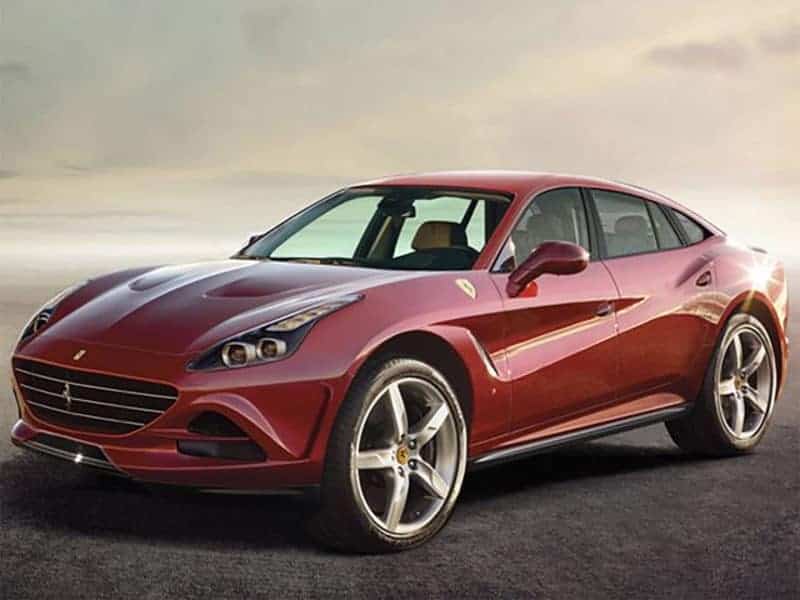
05. 2020 Monza SP1 and SP2
The oddball Monza SP1 and SP2 are more of an expression of Ferrari’s strong position at the moment than a serious attempt to field a convertible sports car. Be that as it may, they’re still either some of the coolest cars the Italian automaker has fielded in recent years or their biggest flop – depending on your perspective. If you’re a 1950s race car type of connoisseur, this is the best thing you could hope from Ferrari.
The gap might be significant, but the SP1 and SP2 actually draw inspiration from the barchetta-type race cars popular back in the fifties, the most famous of which was likely the 1954 Ferrari 750 Monza. Hence the Monza name’s revival in the modern era. The SP1 and SP2 bits stand for the cars’ respective seating capacity.
The two Monzas are offered exclusively to preferred Ferrari customers as only 499 (customer preferences to dictate the split between the two) will be built. What’s more, they go for 1.6 million euros (including taxes) in their home market which translates to some $1.8 million at this particular moment.
Not only are the Monza SP1 and SP2 highly unusual from the body style and design language point of view, but they also come with an unusually powerful powerplant for such petite vehicles. Powering the contemporary takes on the iconic Monzas is the 812 Superfast’s naturally aspirated 6.5L V12 crammed under barchettas’ unusually long nose. That’s a diametrically opposite approach to that of the original cars which actually downsized from Colombo-built V12s to Lampredi-designed 4-cylinders.
Even more staggering is the fact they develop a whopping 809 horsepower and 530 pound-feet of twist – an additional 20 ponies over the gorgeous GT donor. This allows the Monza SP1 and SP2 to hit 60 mph from a standstill in just 2.9 seconds and 124 mph in 7.9 seconds. We’d like to see the lucky future convertible owners do that without a full racing gear considering neither of two models sports a conventional windshield but a Ferrari-patented “Virtual Windshield” which diverts the airflow away from driver. Something’s gotta give, right?

04. 2020 488 Pista Spider
The Ferrari 488 Pista Spider is one of the hottest convertibles money can buy, although you’d need some good connections with the Italian brand and quite a lot of money to begin with. The former because the ultimate Ferrari convertible is a limited-production car and the latter because neither of them is available for any less than $380,000. Then again, the 488 Pista Spider has its reasons for being priced the way it is.
It’s the company’s first convertible lighter than the comparable coupe version which helps it achieve the same performance figures as the usually-more-rigid hard-tops. The Pista drop-top weighs 3,042 pounds which is a feat achieved thanks to extensive use of carbon fiber, together with alloy wheels, and an interior rid of any unnecessary bits.
The Pista Spider handles like a champ and cuts corners like a hot knife cuts through butter, but then again that was to be expected from one of the best track-focused 2-door sports cars with the latest tech. One of the tech features in question is the Ferrari Dynamic Enhancer which applies separate brakes depending on the situation, thus greatly improving handling.
Presented at the 2018 Pebble Beach Concours d’Elegance, the 488 Pista Spider actually debuted during MY 2019. The 2020 Ferrari 488 Pista Spider remains unchanged. If any of available copies remains unsold by then, that is. The Pista is bowing down after MY 2020, together with its more conventional 488 sibling.
Powered by a 3.9L twin-turbo V8, the track-focused version of the 488 convertible develops the same 720 horsepower and 568 lb-ft of twist as its coupe counterpart. Paired with a 7-speed dual-clutch gearbox which sends all that power to the rear, the 488 Pista convertible is capable of accelerating to 60 mph in just 2.8 seconds and maxing out at 211 mph. Of course, with its roof raised.
All this wouldn’t have been possible if the Italians hadn’t tweaked the regular 488’s engine a bit by installing different valves, stronger pistons, and a new camshaft, among other things. Despite that, the upgraded engine is still 39 pounds lighter which is just another bit where the 488 Pista convertible has saved a few pounds.
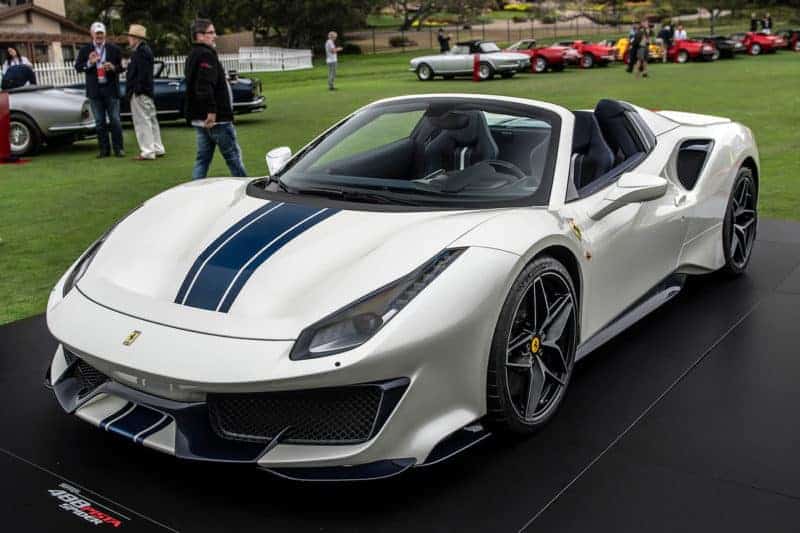
03. 2020 GTC4Lusso
Love it or hate it, the shooting brake grand tourer offers seating for almost four regular-sized persons and for that feat alone, it sets new standards when it comes to Ferraris in general. Of course, the forthcoming Ferrari Purosangue will take that to a whole new level, but until the FUV arrives, the GTC4Lusso will be your best bet of owning a Ferrari suited for everyday needs.
Introduced in 2016, the grand tourer has become somewhat aged in 2020, but the Italians are still reluctant to treat it with a mid-cycle refresh. Moreover, the GTC4Lusso’s predecessor, the Ferrari FF, was actually replaced instead of being updated. Details of the GTC4Lusso’s future are still pretty much non-existent at this point but we’d expect to see more changes on the inside than outside. Also, the Italians might freshen things up underneath as well, but obviously not in 2020.
Speaking of which, the GTC4Lusso can be ordered in both the conventional V12 or V8-powered forms. The former sports a 6.3L version of the F140 V12 mill that’s good enough for 680 hp and 514 lb-ft of torque. It also costs a whopping $300,000, making it unattainable for most car enthusiasts.
The GTC4Lusso T, on the other hand, starts from around $260,000 which is basically the same thing for most people. However, it sports a more compact 3.9L twin-turbocharged V8 mill that’s almost equally impressive as the larger V12 with 602 ponies and 561 pound-feet of rotational force on tap. It’s four-tenths of a second slower to accelerate to 60 mph than the conventional GTC4Lusso, clocking in at the 3.5-second mark.
Both engines have advantages of their own, and both come with Ferrari’s seven-speed dual-clutch unit. The main differences are: the V12-powered units sport an all-wheel-drive system whereas the 121-pound lighter GTC4Lusso T comes in a rear-wheel drive configuration.
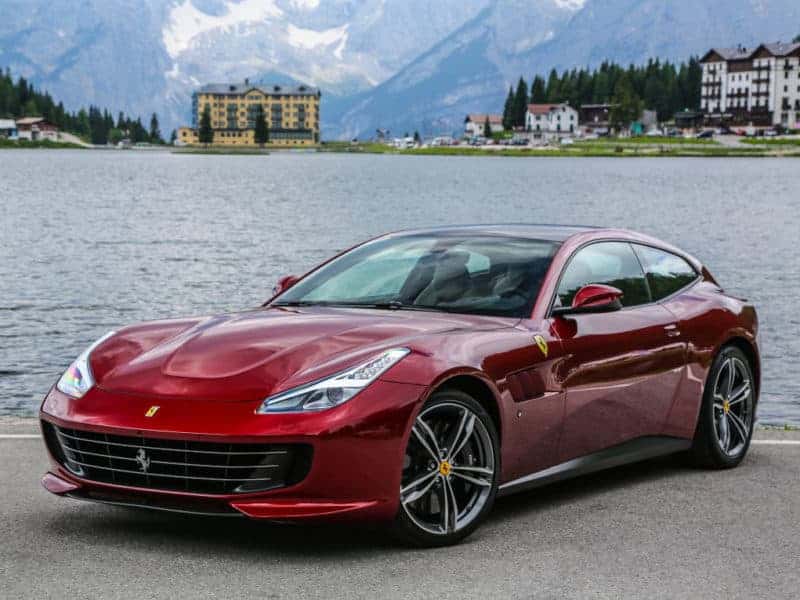
02. 2020 Portofino
Entry-level only in writing – the 2+2 hard-top convertible starts from $215,000 and possesses all the traits of a genuine Ferrari sports car from impeccable styling, over advanced technology, to blistering performance. The Ferrari Portofino replaces the polarizing yet successful California T and rectifies one of its predecessors’ main issues.
The Portofino is almost 200 pounds lighter and boasts 35 percent increased body rigidity which puts it in a position to fulfill the true entry-level Ferrari’s potential – something that its predecessor never could.
The 2020 Ferrari Portofino is barely different than the initial models which first rolled from the Maranello factory in 2018. The grand tourer sports a new electric power steering setup which, in combination with the highly advanced electronic rear differential, gives it handling and stability that should finally please most Ferrari enthusiasts.
When I said the Portofino is an entry-level Ferrari only on paper, I had mostly its powertrain in mind. The 2-door sports car finds its motivation behind a 3.9L twin-turbocharged V8 capable of providing it with as much as 591 horsepower and 561 pound-feet of rotational force. The remainder of Portofino’s driveline consists of a 7-speed dual-clutch gearbox and rear-wheel drive.
Thanks to a combination of all the aforementioned upgrades to the California T, the Ferrari Portofino is capable of accelerating to 60 mph in just 3.5 seconds and hitting a top speed of about 200 mph. The California T was a tad bit slower than that, especially around the track.
The Ferrari Portofino is set up for a few successful years the way things stand at the moment. With a bit of luck, it should also at least duplicate its predecessor’s – the best-selling Ferrari in history – sales figures. Then again, this record will be in jeopardy once the Purosangue SUV arrives.
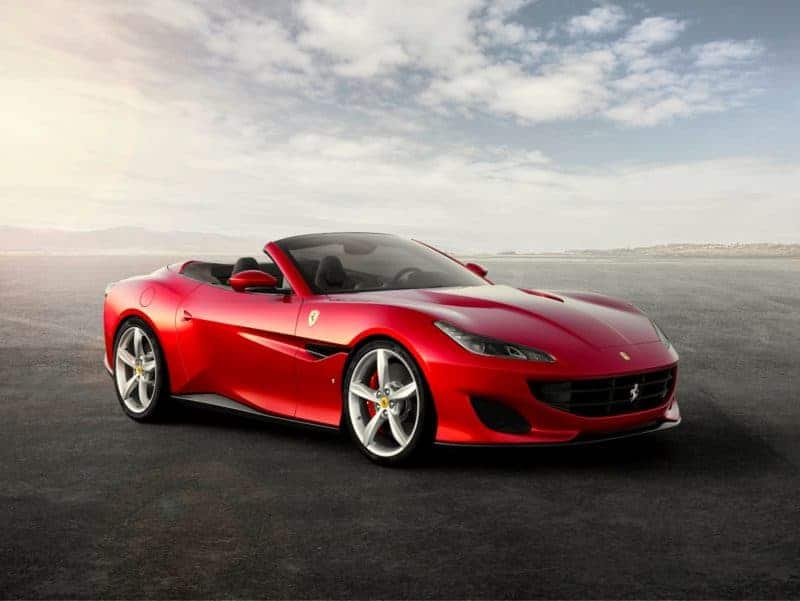
01. 2020 812 Superfast
The grand tourer 2-door coupe stands out as one of the most coveted Ferrari models money can buy at the moment. Aptly named, the supercar is more than capable of hitting 211 mph and accelerating from 0 to 60 mph in just 2.8 seconds. It doesn’t come cheap, however, as basic models start from around $360,000. What’s more, the 812 Superfast sports as much as $140,000 worth of options, $50,000 of which go on carbon fiber trim pieces alone.
As it is the case with pretty much every Ferrari out there, the 812 Superfast doesn’t rely on performance alone, but also boasts one of the most daring designs. Most of the car (without the aforementioned carbon fiber panels) is made of aluminum, as the F12berlinetta’s space frame carries over mostly unchanged.
The 812 Superfast gets an improved rear-wheel steering system taken from the track-focused F12tdf, and stands out as the very first Ferrari fitted with the EPS (Electronic Power Steering) system.
The engine behind the ludicrously quick 812 Superfast is denoted by 6.5 liters in displacement. The naturally aspirated F140 V12 redlines at a mind-blowing 8,900 rpm and provides as much as 789 horsepower at 8,500 rpm. It also delivers 530 lb-ft of twist at 7,000 rpm. All this takes a toll on the 812 Superfast which weighs around 3,900 pounds, but still accelerates and handles like a charm as we’ve already established.
In contemporary Ferrari fashion, the 812 Superfast, too, comes with a 7-speed dual-clutch automatic which routes all 789 ponies to the rear.
The 2020 Ferrari 812 Superfast carries over without any major revisions with the possibility of a track-oriented version of the grand tourer joining the lineup. Its predecessor, the F12berlinetta, was joined by the aforementioned F12tdf in its fourth year, and MY 2020 is, incidentally the Superfast’s fourth year on the market as well.
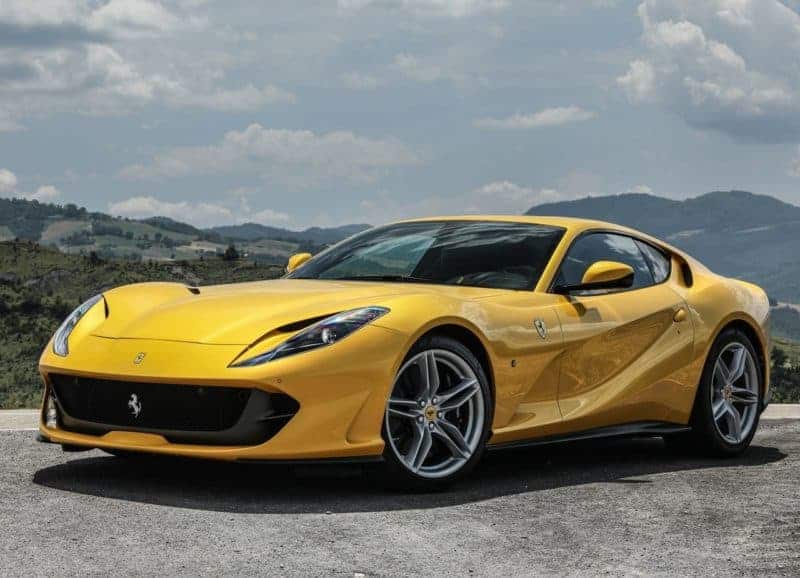
What’s Not in the New 2020 Ferrari Lineup
01. 2020 Ferrari 488
The 488 berlinetta coupe and convertible are far from being uncool or outdated (although they’re certainly starting to show their age), but with their lineup being expanded by even more powerful Pista models – the 488 GTB and Spider aren’t that cool anymore either. Moreover, introduced back in 2015, the 488 is bowing down this year. Its predecessor, the 458, actually lasted six years.
This also means the 488 will be the Italian automaker’s oldest model by 2020, and one of the less inspiring ones to boot. Last we checked, the Ferrari 488 GTB used to cost around $260,000, while the hard-top Spider version of the 2-door sports car required at least $290,000.
Whether conventional or performance-oriented, all Ferrari 488’s share the same 3.9L twin-turbocharged V8 engine, rear-wheel drive setup, and a 7-speed dual-clutch trans. As already established, this setup is good enough for a whopping 710 horsepower in the 488 Pista high-output models, but the “base” GTB and Spider’s 661 horses aren’t that bad either.
They’re two-tenths of a second slower to hit 60 mph than their Pista counterparts and are maxing out at 205 and 202 mph, respectively. This also happens to be slightly slower than the 488 Pista’s top speed of 211 mph.
However, this shouldn’t be an issue in the real world. The real issue is the fact that competition never sleeps and the fact that the Maranello company can’t allow itself to rest on its laurels. After six fruitful years, it’s time for them to move on and for the Ferrari 488 itself to take its rightful place in the annals of history among the supercar legends.
